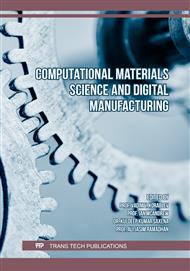p.3
p.13
p.41
p.51
p.61
p.69
p.77
p.83
Receiving of New Carbon-Sulfur-Containing Plastic Lubricants Based on Regenerated Products and Used Sorbents
Abstract:
The work is devoted to the solution of the actual problem of waste management and its use for obtaining useful technical products, in particular, special purpose plastic lubricants. The research has been conducted on the use of spent sorbents after complex adsorption purification of industrial wastewater from Cu2+, S2– and HS–-ions in the composition of plastic lubricants. The composition of the latter includes a solid modified surface of sorbents [(activated carbon + kieselguhr) + CuS + S] and regenerated industrial oil I-40A. High operational properties of plastic lubricants are provided by modification of the solid surface of the components, on which there are active centers for chemisorption. The surface modification of activated carbon has been carried out in order to obtain [Cu(µ-S5)]2 or CuS2 as possible equivalent substitutes for MoS2. It was established that the chemical interaction of the pentasulfide anion and the copper (II) cation ends with the formation of a planar six-coordinated chelate center CuS4(Н2О)2 on the surface, followed by its destruction and the formation of copper (II) sulfide and elemental sulfur. Activated carbon acts not only as a sorbent, but also as an active catalyst of topochemical reactions on a solid surface. Modification of the kieselguhr surface is caused by the presence of active centers on its surface – silanol groups –OH, which are subject to esterification. The developed plastic lubricants provide the necessary operational properties of heat-resistant industrial lubricants.
Info:
Periodical:
Pages:
51-58
Citation:
Online since:
April 2023
Authors:
Price:
Сopyright:
© 2023 Trans Tech Publications Ltd. All Rights Reserved
Share:
Citation:


